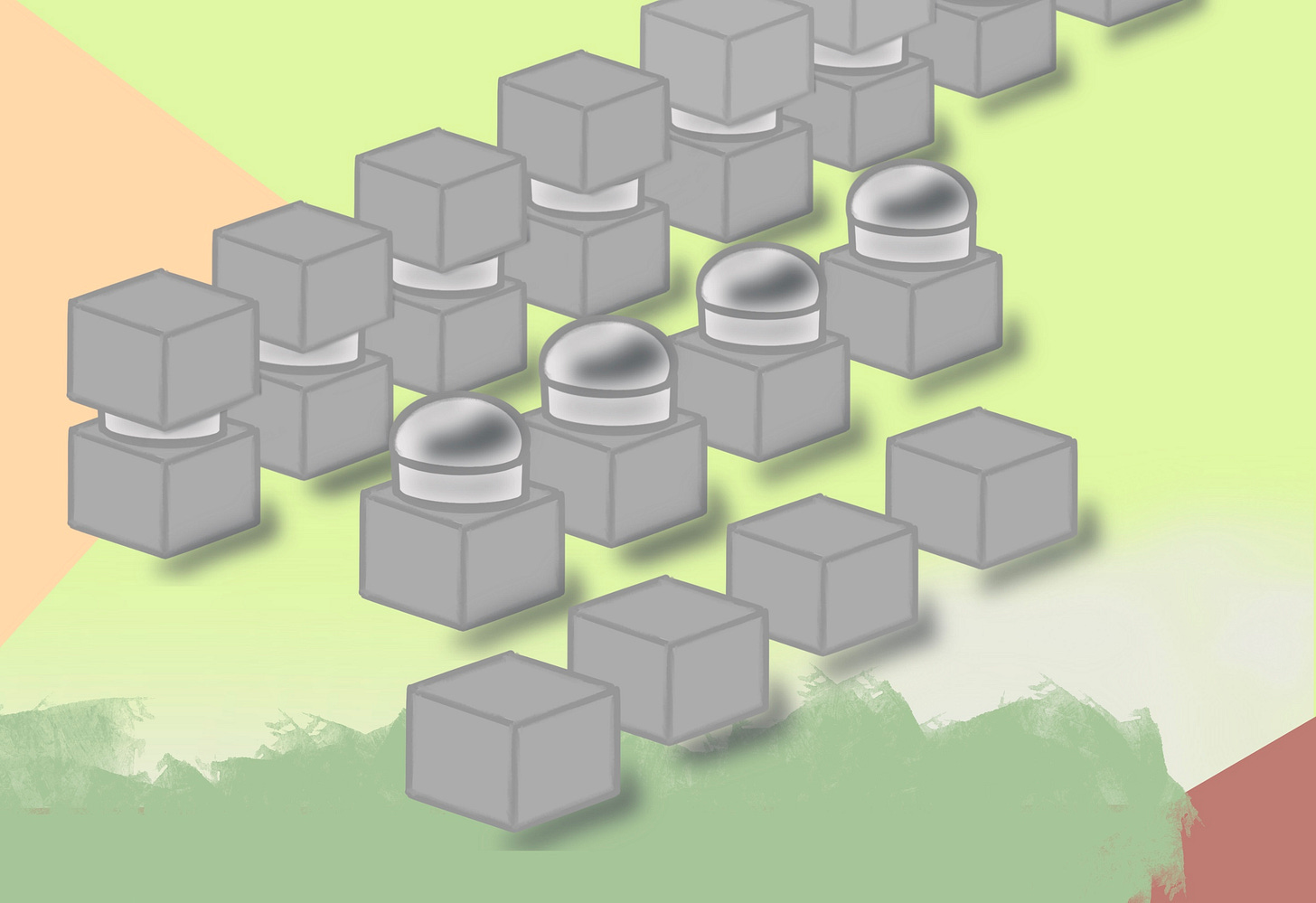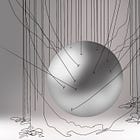What Forces Could Drive Down the Cost of Nuclear Energy
Safer, cheaper, and modular: mass manufacturing is the future of nuclear energy.
The costs of Small Modular Reactors (SMRs) are projected to be lower than those of current large-scale nuclear reactors, with the expectation that they will avoid the persistent issues of cost overruns and delays. However, some SMR startups have encountered challenges reminiscent of those faced by large reactors, particularly with cost overruns during the development of the First-Of-A-Kind (FOAK) reactor. These initial hurdles, including navigating complex regulatory landscapes, are not the best indicators of the eventual cost of mass-produced, standardized SMRs—the "Nth" units.
A better parallel might be the early days of solar panels. The first commercial solar units were prohibitively expensive and limited to niche applications, such as satellites. Today, their costs have plummeted, making them accessible for widespread use. Similarly, while SMRs may not address immediate energy challenges over the next 5–10 years, their real potential lies in their utility 10–20 years down the road. Artificial intelligence (AI) and data centers, in particular, could emerge as significant customers. These facilities already operate under high-security protocols and are often built modularly, aligning well with SMR deployment.
Microgrids supporting manufacturing hubs present another promising application. Gigafactories producing electric vehicles or semiconductors could use SMRs to bypass reliance on the broader grid, ensuring a stable and secure power supply.
Rising electricity demand—driven by AI, the onshoring of battery and semiconductor manufacturing, and other industrial shifts—has strained the grid’s capacity to keep pace. It has also underscored the value of decentralized, stable power sources, as highlighted by the increasing focus on the grid’s inability to manage expanding demand. Stable, clean power is becoming harder to secure as net-zero ambitions clash with growing electricity needs.
This insight is not about debating whether SMRs are inherently good or bad for energy security, nor is it about weighing their opportunity costs against other energy technologies. Instead, it focuses on the forces that could drive SMRs to become cheaper, safer, and a more viable option for a future where nuclear energy plays a crucial role in a balanced energy mix.
The primary forces driving down the construction costs of nuclear reactors lie in simpler designs that leverage standardized components, enabling serial production in factories. These nearly complete reactors can then be easily shipped to their deployment sites, streamlining installation and reducing on-site complexities.
A Simpler Design is Less Costly to Build
Large reactors in use today rely on complex designs. Their massive size necessitates numerous active systems and redundancies to keep their hot reactor cores cool. High heat output demands extensive piping, pumps, auxiliary systems, and backup power systems to ensure safe operation, adding layers of complexity and cost.
Simplifying reactor design would significantly reduce construction time, the number of components required, and overall costs. It would also streamline updates or modifications, as simpler systems require less extensive rework. For companies developing new reactor designs, this translates to faster and more cost-effective innovation.
Moreover, simpler designs enhance safety. Complexity itself often introduces risks, as intricate systems are prone to failure or unforeseen issues. Smaller reactors, like today’s SMR designs, make simplicity achievable. Their smaller cores inherently require fewer redundancies, reducing the burden on safety systems.
With SMRs, it becomes feasible to adopt entirely passive, integrated safety systems - the entire reactor can be enclosed in a single capsule. Passive safety, which relies on physical principles rather than active interventions, is more effective and practical in smaller reactors due to their compact size and favorable surface-area-to-volume ratio. Passive systems ensure safety without external inputs, using natural laws to maintain stable conditions in case of malfunctions.
Therefore, unlike large reactors, SMRs can forgo the complex network of piping, pumps, and auxiliary systems, along with their backups, that traditional reactors depend on. This reduced complexity not only lowers costs by cutting down on components but also simplifies the management of construction and operation.
Additionally, the autonomous nature of passive safety systems minimizes the need for human intervention. These reactors can effectively be "set and forget," operating with minimal oversight.
Higher safety margins also enable SMRs to be situated closer to where energy is needed, such as near factories or data centers. This proximity unlocks new possibilities, bringing stable, clean energy directly to industries and facilities that demand reliable power.
Serial Modular Construction Reduces Construction Cost
The central idea behind SMR’s reduced cost is that mass manufacturing of modular components, followed by their assembly in factory settings, will significantly reduce construction costs.
During the 1960s and 1970s—sometimes referred to as the golden era for nuclear energy—cost reductions were pursued by building ever-larger reactors to achieve economies of scale. However, the benefits of this approach remain debated. Larger designs often introduced greater complexity, requiring more intricate safety systems. This complexity, in turn, made construction more challenging, leading to delays and cost overruns.
In contrast, SMRs reject economies of scale in favor of economies of serial production. The aim is to produce smaller, standardized modular units in factories. While the first few SMRs may be as costly—or even more expensive—than large reactors, largely due to the need to establish new factories, supply chains, and trained workforces. Over time, as factories scale production, supply chains stabilize, and workforces gain experience, subsequent SMRs are expected to become significantly cheaper on a per-kilowatt basis. Moreover, the production timeline for SMRs would be both faster and more predictable.
Large reactors have attempted to incorporate standardized components to benefit from serial production, but this approach is inherently more difficult for them. Reactor specifications often vary by site; one location might require 2 GW of power, while another might need 3.6 GW. This variability necessitates different reactor designs - eg. two 1 GW units for the first site and three 1.2GW units for the second - with unique components, undermining standardization efforts. In contrast, identical 100 MW SMRs can be deployed at both sites, enabling the use of standardized parts across all installations.
Serial production also allows for iterative learning. With each unit produced, companies can refine designs, correct flaws, and enhance safety features. This continual improvement leads to more robust, thoroughly tested reactors.
However, standardization is a critical prerequisite for cost reductions in SMRs. The current proliferation of reactor concepts complicates this process. Without industry-wide standardization, achieving significant cost reductions will be challenging, and not all designs will therefore survive the competition. Even among successful designs, broader standardization across the industry will be necessary to drive costs lower.
Such widespread standardization could commoditize SMRs, much like solar panels or batteries. If this happens, the differentiation between companies may shrink, raising questions about what would set one manufacturer apart from another. Nuclear reactor production remains a highly specialized field with significant barriers to entry. Even the ambitions of entire nations often fall short of establishing a competitive nuclear industry.
For the few companies that manage to survive, master production, and achieve low operational costs, the potential for high profit margins remains. The market will likely reward those who can balance innovation, efficiency, and reliability within a standardized framework.
Advantages of Factory Production Over On-Site Construction
SMRs that incorporate serial production of identical replicas would almost entirely be built in a factory and then shipped to their intended sites. This approach contrasts sharply with current large reactors, which, despite incorporating many factory-fabricated components—approximately 30% in modern designs—still require extensive on-site construction. Large reactors inevitably depend on significant on-site work due to the sheer size of their structures, which makes transportation impractical.
The on-site construction model poses challenges for learning and productivity. It is difficult to implement improvements or incorporate lessons from previous projects when reactors are built at different locations, each with unique conditions and complexities.
In contrast, factory settings centralize production, allowing multiple reactors to be built in one location, in sequence. Lessons learned from building one unit can immediately inform the construction of the next, continuously improving efficiency and quality. This method is not novel; industries like aerospace and shipbuilding have long relied on factory fabrication to construct complex machines efficiently.
Factory-based construction offers several key advantages over on-site assembly.
By minimizing on-site activity and shifting construction to a controlled factory environment, the construction time for the Nth unit becomes far more predictable.
Studies on naval construction sites have shown that factory-based production can achieve efficiency gains of up to three times compared to on-site work, significantly reducing costs. However, efficiency is only part of the equation when constructing complex machines that must meet exceptionally high safety standards.
A permanent factory fosters a stable workforce with lower turnover, allowing expertise and knowledge to build over time, improving overall productivity.
Factory environments enable specialized quality control stations equipped with advanced testing machines, ensuring consistent, high-quality output. Variables are easier to manage and refine, and rigorous testing becomes feasible.
Advanced manufacturing techniques like electron beam welding, additive manufacturing, CNC machining, robotic assembly, and extreme environmental controls (e.g., clean rooms, cryogenic processing) are far easier to implement in a factory than on-site. These methods allow for the use of advanced materials, enhancing safety and durability.
As a result, factory-built units can be delivered on time, with predictable costs and greater assurance of quality.
Factory construction offers another significant advantage when customers seek to increase capacity incrementally. For a new nuclear power plant, constructing multiple reactors requires setting up an on-site workshop with specialized equipment tailored to the initial project. If, after a few years of operation, the plant decides to expand and add another reactor, a new on-site workshop must be established to build that single unit—a process that can be prohibitively expensive.
In contrast, with SMRs, capacity expansion becomes far more straightforward. Instead of incurring the high costs of setting up a new workshop, customers can simply order additional reactors from an existing factory. These factories, already optimized for efficiency and mass production, can supply identical units on demand.
Consider how inefficient it would be if, when British Airways needed new airplanes, Boeing had to set up a workshop in the UK to build those planes. And if British Airways returned two years later for more planes, Boeing had to repeat the process by constructing another workshop. Instead, Boeing manufactures its planes centrally, fully equipped and ready for deployment, whether it’s the paint job, entertainment systems, or other customizations. The airplane arrives operational, ready to take to the skies the very next day. SMRs can bring this same level of efficiency and predictability to nuclear energy expansion.
What This Means
SMRs open the door to customers seeking lower investment risks, making nuclear power more appealing to a broader audience.
Modular units allow for gradual, stepwise capacity expansion, enabling customers to align their investments with actual demand growth. This stepwise approach minimizes upfront financial risk while reducing exposure to delays and cost overruns. As a result, the overall risk is lower, and so is the associated risk premium.
Additionally, small reactors create opportunities in new markets. They can power microgrids, remote communities, gigafactories, and data centers. Countries with smaller grids, like Singapore and Ireland, can more easily integrate nuclear energy without destabilizing their networks. Autonomously operating SMRs that operate for 5–10 years without refueling could function almost like perpetual engines—plug-and-play systems that provide stable electricity seamlessly. After their cycle, these reactors could be returned to a controlled facility for refueling and redeployment, ensuring efficiency and safety.
Another key driver in reducing the cost of nuclear energy is regulatory reform. Streamlined regulation could significantly cut expenses. How regulations are shaped often depends on public perception and governmental action. Public trust is pivotal. When the public sees nuclear energy as a viable, reliable option, regulatory improvements will follow, further reducing costs.
SMRs are uniquely positioned to catalyze this transformation, proving that nuclear energy is not the daunting prospect it has been made out to be, but a practical and innovative solution for modern energy needs. SMRs can help shift perceptions by demonstrating that nuclear power is both safe and cost-effective, dispelling the deeply ingrained fears surrounding the technology.
Further reading:



